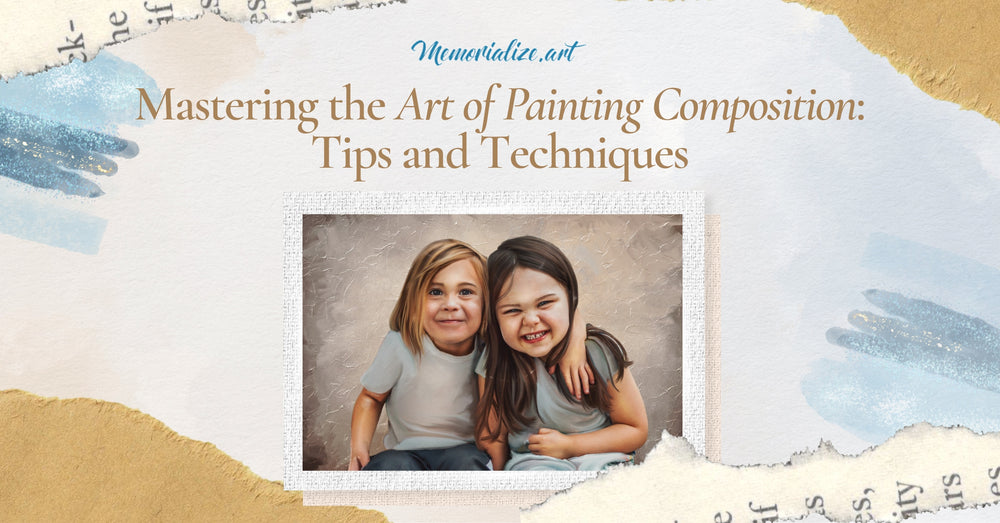Mastering the Art of Painting Composition: Tips and Techniques

Painting composition is vital to create visually striking artwork. A well-planned composition enhances the aesthetic appeal of a piece but also conveys the artist's message. Whether you are working on a custom oil painting, an acrylic portrait, or another type of artwork, understanding the basics of art composition can significantly impact your creative endeavors.

Definition of Painting Composition
Painting composition refers to the arrangement and organization of visual elements within a work. The underlying structure guides the viewer's eye through the painting, dictating the focal points and overall flow of the piece. A well-composed painting appears harmonious and visually balanced, engages the viewer, and effectively communicates the intended message.
Importance of Composition in Creating a Successful Painting
A strong composition is crucial for creating a successful painting because it establishes a sense of unity, balance, and harmony among the visual elements. A well-thought-out composition directs the viewer's attention to the most critical aspects of the painting, evoking emotional responses and providing a sense of order. Moreover, a good composition enables the artist to effectively convey their intended message or story and engage the viewer's interest throughout the piece.
Elements of Composition
Line
Shape
Color
Texture
Space
What Makes a Good Composition in Painting?

A good composition in painting effectively organizes and arranges visual elements to create a harmonious, balanced, and engaging piece of art. It directs the viewer's eye through the painting, highlighting the focal points and establishing a sense of unity among the elements. Key factors contributing to a strong composition include a well-defined focal point, proper balance between positive and negative space, a contrast in color and value, and leading lines guiding the viewer's gaze. Mastering these principles can enhance the impact and appeal of your canvas painting, making it a visually captivating and memorable work of art.
Techniques for Creating a Strong Composition
Utilizing the Rule of Thirds
Implementing Leading Lines
Achieving Balance
Applying Contrast
Establishing a Focal Point
Common Composition Mistakes to Avoid
Centering the Focal Point
Ignoring the Edges
Overcrowding
Lack of Variety
Final Thoughts
Mastering the art of painting composition is essential for creating visually compelling and successful artwork. By understanding the elements of composition and employing various techniques, you can plan and execute a well-balanced and engaging painting that effectively communicates your message. Remember to practice and experiment with different compositional approaches to find the one that works best for your unique artistic style and subject matter.
Order Your Unique Canvas Painting at Memorialize Art

Elevate your art collection with a unique canvas painting from Memorialize Art. Our team of talented artists is dedicated to creating masterpieces that showcase exceptional composition and capture the essence of your memories and experiences. Don't miss the opportunity to own a one-of-a-kind work of art that will be cherished for years to come. Visit our website today and order your unique canvas painting at Memorialize Art.










